From half a world away and between high-stakes meetings with U.S. President Donald Trump and top American government officials and business leaders, President Ferdinand R. Marcos Jr. actively monitored and directed government response to mitigate the impact of widespread flooding in the country.
President Marcos left for the U.S capital on July 20 for a three-day official visit at the invitation of Trump.
In their first face-to-face meeting, the two heads of state reaffirmed their countries’ “ironclad” commitment to the Mutual Defense Treaty. They discussed enhanced defense and trade cooperation, cybersecurity, energy supply, resilience, and critical infrastructure.
Trump repeatedly said he was greatly honored by President Marcos’ visit. During their meeting, the U.S. leader agreed to lower the tariff rate for Philippine exports from 20 percent to 19 percent.
President Marcos, for his part, welcomed the U.S. government’s pledge of additional USD15 million (PhP853.7 million) for private sector development under the Luzon Economic Corridor initiative and additional USD48 million (PhP2.7 billion) in foreign-assisted projects.
In his meetings with Secretary of Defense Pete Hegseth and Secretary of State Marco Rubio, President Marcos emphasized the importance of the Philippines-U.S. alliance in maintaining peace and stability in the South China Sea and the Indo-Pacific region.
President Marcos also met with top executives of global investment, semiconductor, healthcare, and infrastructure firms, gathering USD21 billion (PhP1.195 trillion) worth of investment pledges, which could generate thousands of jobs for Filipinos.
In between his meetings, President Marcos monitored developments and gave orders to address the effects of the widespread flooding caused by the storm-enhanced southwest monsoon. The President directed concerned agencies to ensure the prompt rescue and shelter of families and individuals affected by floods.
The President also ordered assistance for farmers whose crops were damaged and the implementation of flood control measures, especially in thoroughfares.
The President also directed the Department of Energy to immediately restore power to outage-affected areas and ensure a stable power supply to vital infrastructure like hospitals and evacuation centers.
The President arrived from the United States on Wednesday, July 23, shortly after 10 p.m. Hours later, on Thursday morning, President Marcos checked the condition of flood victims in evacuation centers in Rizal province, where he distributed relief goods and checked the facilities.
He then presided over the briefing at the National Disaster Risk Reduction and Management Council’s operations center in Camp Aguinaldo, where the President ordered the deployment of medical teams to evacuation centers, alternative learning arrangements for students, and continuous rescue and relief operations.
On July 25, President Marcos launched the Philippine Health Insurance Corp.’s (PhilHealth) enhanced primary care package called Yaman ng Kalusugan Program para Malayo sa Sakit (YAKAP) in Quezon City.
The YAKAP program expanded health services, including access to 75 essential medicines from the previous 21 and 20 laboratory tests from the original 15.
The Chief Executive will deliver his fourth State of the Nation Address on Monday, July 28. | PND

